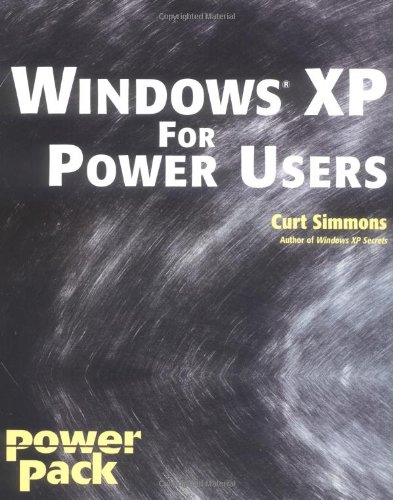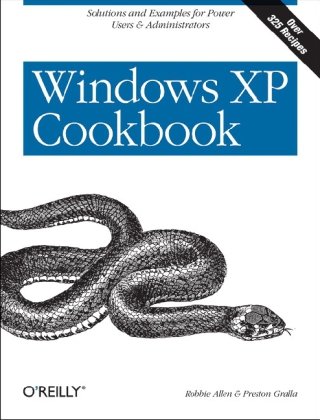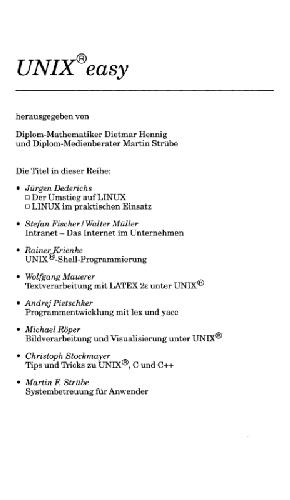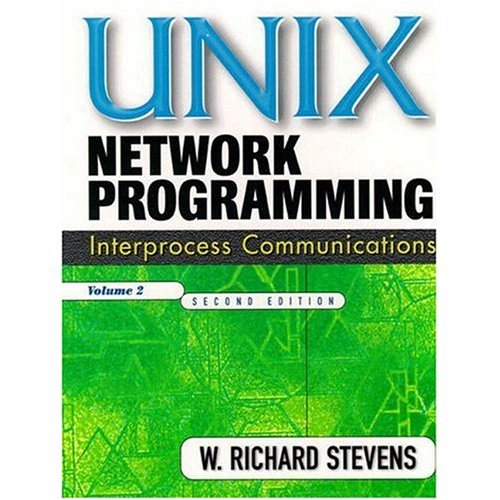Curt Simmons9780764549984, 0764549987
Table of contents :
Preface……Page 7
Acknowledgments……Page 9
Contents at a Glance……Page 10
Contents……Page 11
Configuring the Start Menu……Page 19
XP Start Menu……Page 23
Classic Start Menu……Page 25
Configuring the Taskbar……Page 26
Managing the Recycle Bin……Page 28
Managing Control Panel Appearance……Page 30
Themes……Page 31
Desktop……Page 32
Screen Saver……Page 35
Appearance……Page 36
Settings……Page 38
Managing Users in Windows XP……Page 41
User Accounts in the Control Panel……Page 42
Creating User Accounts with Computer Management……Page 47
Managing User Accounts……Page 49
Managing Groups……Page 50
Using Group Policy……Page 52
Group Policy Features……Page 54
Configuring Group Policy Settings……Page 55
Windows Settings……Page 58
Administrative Templates……Page 62
User Configuration……Page 67
Installing and Removing Applications……Page 71
Installing Software……Page 72
Using Applications Not Written for Windows XP……Page 74
Using the Program Compatibility Mode Wizard……Page 75
Compatibility Administrator……Page 78
Managing Application Performance……Page 81
Managing Applications and Solving Problems……Page 82
Managing Automatic Updates……Page 84
Windows XP User Accounts……Page 85
Local Group Policy……Page 86
Now Playing……Page 89
Copy from CD……Page 94
Media Library……Page 96
Radio Tuner……Page 98
Copy to CD or Device……Page 99
Skin Chooser……Page 100
Configuration Options……Page 101
Movie Maker 2……Page 103
Movie Maker 2 Requirements……Page 104
Opening Windows Movie Maker 2……Page 105
Recording and Importing Video……Page 107
Assembling Movies……Page 108
Using Transitions and Effects……Page 111
Using Audio in Your Movies……Page 112
Working with Photos and Folders……Page 114
Ordering Prints Online……Page 118
Printing Photos on Your Printer……Page 121
E-mailing Photos……Page 123
Burn Your Photos to a CD……Page 124
Startup……Page 125
Shutdown, Logoff, and Fast User Switching……Page 128
Log Off Options……Page 129
Working with Fast User Switching……Page 130
Power Management……Page 132
Power Schemes……Page 133
Hibernate……Page 134
UPS……Page 136
Installing and Removing Hardware on Windows XP……Page 137
Using Device Manager……Page 139
Configuring Hardware Profiles……Page 142
Working with Device Drivers and Driver Signing……Page 144
Configuring Display Properties……Page 148
Using Multiple Monitors……Page 151
Working with Disk Devices……Page 153
Working with File Systems……Page 157
Formatting and Converting Drives to NTFS……Page 158
Converting a Basic Disk to a Dynamic Disk……Page 160
Working with Dynamic Disks……Page 162
Creating Simple Volumes……Page 166
Creating a Spanned Volume……Page 168
Creating Striped Volumes……Page 169
Using Hard Disk Properties……Page 170
General Tab……Page 171
Tools Tab……Page 172
Hardware Tab……Page 173
Security and Quotas……Page 174
Configuring Folder Options……Page 175
Configuring Folder Views and Toolbars……Page 178
Managing File Associations……Page 182
Using File and Folder Encryption……Page 183
Using NTFS Compression……Page 186
Compressed (Zipped) Folders……Page 188
Offline Files and Folders……Page 189
Understanding the Registry……Page 193
Getting to Know the Registry’s Structure……Page 194
Keys……Page 195
Hives……Page 196
Restoring the Registry……Page 197
Using the Registry Editor……Page 198
Exploring the Subtrees……Page 199
HKEY_CURRENT_USER……Page 200
HKEY_LOCAL_MACHINE……Page 202
Using the Registry Editor……Page 205
Exporting and Importing Registry Files……Page 208
Microsoft Management Console……Page 211
Loading Snap-ins……Page 213
Saving a Console……Page 215
Configuring Console Options……Page 216
Using the Action Menu……Page 218
Using the View Menu……Page 219
Creating Taskpad Views……Page 220
Tips and Tricks……Page 225
Networking 101……Page 227
A TCP/IP Primer……Page 228
TCP/IP Addressing……Page 229
TCP/IP Protocols……Page 231
APIPA……Page 232
Direct Cable Connection……Page 233
HomePNA……Page 234
Wireless Networks……Page 235
Getting to Know Workgroup Hardware……Page 237
Ethernet Hardware……Page 238
Setting Up a Workgroup……Page 239
Creating a Direct Cable Connection……Page 240
Configuring a Workgroup……Page 242
Setting Up an Infrared Network……Page 245
Setting Up an 802.11b Network……Page 248
Configuring Network Bridges……Page 249
Managing Connections……Page 250
Viewing Connection Information……Page 252
Configuring TCP/IP……Page 254
Ping……Page 257
Netstat and Nbtstat……Page 258
Route……Page 259
Nslookup……Page 260
Getting to Know Windows Networking……Page 261
Understanding Windows Sites……Page 262
Understanding Organizational Units……Page 263
Joining a Domain……Page 265
Logging On to a Domain……Page 268
Using the UNC Path……Page 270
Searching the Active Directory……Page 271
Creating a Network Place……Page 273
Mapping a Network Drive……Page 275
Disjoining from a Domain……Page 276
Understanding Virtual Private Networking……Page 277
Connecting to a VPN Server……Page 278
Configuring Windows XP to Accept Incoming VPN Connections……Page 279
Managing VPNs and Firewalls……Page 280
Understanding Remote Desktop……Page 281
Turning on Remote Desktop……Page 282
Connecting with Remote Desktop……Page 283
Setting Up the Remote Desktop Client……Page 285
Using Automatic Logon……Page 286
Configuring Remote Desktop Options……Page 288
Using Remote Desktop with Internet Explorer……Page 291
Using Remote Assistance……Page 292
Enabling Remote Assistance……Page 293
Requesting Help from an Expert……Page 294
Exploring Internet Connections……Page 297
Configuring Internet Connections……Page 299
Starting a Connection……Page 302
Managing Dial-Up Connections……Page 303
General Tab……Page 304
Options Tab……Page 305
Security Tab……Page 306
Common Connection Problems……Page 307
Configuring Dialing Rules……Page 308
Sharing an Internet Connection……Page 311
Understanding ICS……Page 312
Working with ICS……Page 313
Configuring Internet Connection Firewall……Page 316
Setting Up ICF……Page 319
Enabling Services……Page 320
Using the ICF Log……Page 322
Understanding Simple File Sharing……Page 327
Working with Shared Folders……Page 329
File and Folder Permissions with NTFS……Page 332
Advanced NTFS Permissions……Page 336
Share Level and NTFS Permissions……Page 338
Managing Caching Settings on Shared Folders……Page 340
Taking Ownership of a File or Folder……Page 341
Managing Shared Printers……Page 342
Sharing a Printer and Managing Permissions……Page 345
Managing Print Queues……Page 348
Auditing in Windows XP……Page 351
Configuring Auditing……Page 353
Setting Up Objects for Auditing……Page 354
Using Event Viewer to View the Security Log……Page 357
Using Disk Quotas……Page 359
Understanding Backup Options in Windows XP……Page 363
Types of Backup……Page 364
Formulating Your Backup Plan……Page 365
Understanding System State Data……Page 366
Creating a Backup Job……Page 367
Restoring Data……Page 372
Performance……Page 377
Getting to Know Performance……Page 378
Adding Counters……Page 381
Logging Data……Page 382
Creating Alerts……Page 385
Using Task Manager’s Performance Option……Page 386
Error Checking……Page 387
Disk Defragmenter……Page 388
Disk Cleanup……Page 389
Managing Memory Performance……Page 390
Scheduling Tasks……Page 393
Troubleshooting Windows XP……Page 397
Using CTRL+ALT+DEL……Page 398
Accessing Windows Help……Page 399
Using Safe Mode……Page 402
Enabling System Restore……Page 403
Creating Restore Points……Page 405
Using System Restore……Page 406
Undoing a Restoration……Page 408
Using the Recovery Console……Page 409
Installing and Starting the Recovery Console……Page 410
Recovery Console Commands……Page 411
Removing the Recovery Console……Page 419
Checking Out PowerToys……Page 421
Downloading and Installing PowerToys……Page 422
Tweak UI……Page 424
Mouse……Page 425
Desktop……Page 426
Logon……Page 427
Alt-Tab Replacement……Page 428
Image Resizer……Page 429
CD Slide Show Generator……Page 431
Virtual Desktop Manager……Page 432
Taskbar Magnifier……Page 433
HTML Slide Show Generator……Page 434
Webcam Timershot……Page 436
Understanding Scripting……Page 437
Batch Scripting Overview……Page 438
JScript Overview……Page 439
Batch Scripting Basics……Page 440
Using Batch Parameters……Page 441
Batch File Logic Commands……Page 442
Other Useful Operational Commands……Page 445
Batch-Compatible System Commands……Page 448
Using Net……Page 449
Using Xcopy……Page 450
Using Netsh……Page 452
Gathering Information with ipconfig and netstat……Page 454
Sample Network Backup Script……Page 455
Appendix A: Windows XP Installation Options……Page 457
Appendix B: Using the Command Console……Page 477
Appendix C: Helpful Windows XP Utilities……Page 485
Index……Page 491







Reviews
There are no reviews yet.